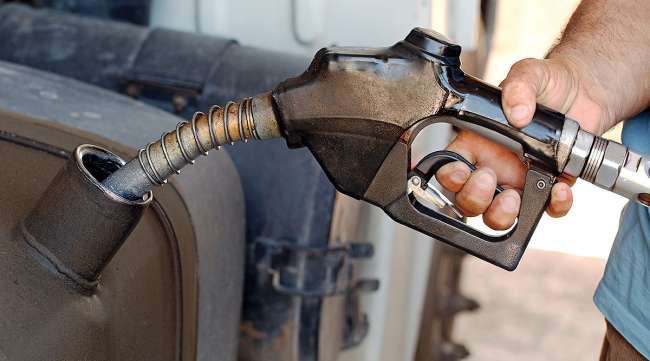Staff Reporter
Diesel Falls 3.8¢ to $2.548 a Gallon; Gas Is Below $2

[Stay on top of transportation news: Get TTNews in your inbox.]
The nationwide average retail price of diesel fuel declined by almost 4 cents per gallon on April 6, knocking trucking’s main fuel more than 50 cents lower than the same time a year ago.
The U.S. Energy Information Administration reported a 3.8-cent drop in diesel to $2.548 a gallon.
That compares with $2.586 the previous week, and also puts diesel 54.5 cents a gallon less than the same time a year ago.
U.S. average on-highway #diesel fuel price on 4/06/2020 was $2.548/gal, DOWN 3.8¢/gallon from 3/30/2020, DOWN 54.5¢/gallon from year ago https://t.co/G0gQkn78ck #truckers #shippers #fuelprices pic.twitter.com/Vjtxa14s9X — EIA (@EIAgov) April 7, 2020
Every region saw prices drop. The Rocky Mountains experienced the most significant fall, by 5.1 cents, to $2.541. California saw the smallest drop at 2.7 cents and still has the most expensive diesel at $3.368 a gallon.
The entirety of the East Coast saw a decline closer to the overall average, 3.7 cents to $2.634. The Midwest ($2.394) and Gulf Coast ($2.325) realized decreases of 3.8 cents.
Meanwhile, the average price of a gallon of gasoline tumbled below $2 for the first time in more than four years. Gasoline tumbled 8.1 cents from the previous week to $1.924.
The last time the national average retail price for a gallon of gasoline dropped below $2 was the week of March 14, 2016, according to EIA.
Every region logged a decline in gasoline prices, and the fuel now costs 82.1 cents per gallon less than a year ago. The Midwest experienced the most significant drop of 10.6 cents from the previous week to $1.629 a gallon. A close second was the Gulf Coast, which saw a decline of 10.5 cents to $1.658 a gallon.
“Fuel is only one of the variable costs associated with maintaining our global operation,” a FedEx Corp. spokesperson told Transport Topics. “Many additional costs have been and will continue to be incurred to safely continue our global operations.”
Andy Milton, senior vice president of supply at Mansfield Energy, said he’s surprised that retail street prices have stayed as high as they have (compared with the futures market) considering demand has declined as much as 50% for gas and 20% for diesel.
U.S. average price for regular-grade #gasoline on 4/06/2020 was $1.924/gal, DOWN 8.1¢/gallon from 3/30/2020, DOWN 82.1¢/gallon from year ago https://t.co/xrHkg3vwCI #gasprices pic.twitter.com/O7c6pAK4sc — EIA (@EIAgov) April 7, 2020
“One would think retailers would be trying to spur more demand with price,” Milton told TT. “However, from talking to a lot of the industry folks the inside store foot traffic has been even decent considering the sharp drop in fuel demand.”
To put that in perspective, Milton added, many markets are seeing the retail fuel street margins range from 75 cents to $1.25. He expects that margin could start to get squeezed throughout April.
When it comes to trucking specifically it depends on what is being hauled. Milton said that the industry is seeing more trucking companies figuring out ways to stay busy by diversifying their business where applicable.
“In one extreme you have fuel hauling, which six months ago was short drivers. Now many of those same carriers are furloughing more than 10% of the driver force,” Milton said. “In the other extreme is grocery products where things can’t even stay on the shelves.”
Milton said these recent changes in fuel prices come down to two extreme events occurring at the same time: OPEC+ officially announcing increased production while fighting for market share has had an impact on supply; and the coronavirus pandemic.
“All bets are off when you don’t even know when things may get back to normal,” Milton said. “Regarding the numbers though, watch refinery utilization, which will indicate how much crude processing is reduced to mitigate the lower demand.”
Milton added that he expects an ideally soft reopening of travel, which will allow for inventories and supply to stabilize with demand. However, if there’s a sharp bounceback and everyone tries to go back to normal at once there will be some additional challenges to manage.
Want more news? Listen to today's daily briefing:




